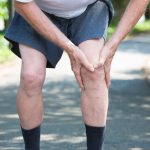With more and more clients seeking support for their continued symptoms many months after their initial Covid-19 infection, as a naturopath I have placed importance on reviewing up to date scientific research on the issue and engaging in educational naturopathic training within my natural medicine industry. It is early days in understanding Long Covid and if you feel this may apply to you, then I hope you find this blog of value.
So, what is Long COVID?
“Long COVID” is a term that is often used to describe one of the complications of coronavirus, but what exactly is it? Long COVID is the colloquial term for post-COVID syndrome, a collection of symptoms that can occur following infection with the virus that causes COVID – SARS-Cov-2.
The World Health Organisation (WHO) defines ‘Long COVID’ as: “the condition that occurs in individuals with a history of probable or confirmed SARS CoV-2 infection, usually:
- three months from the onset of COVID-19; AND
- with symptoms that last for at least two months and cannot be explained by an alternative diagnosis”
It is important to understand that both of the above criteria are required for diagnosis. It is also imperative that individuals do not automatically diagnose without a detailed assessment of other health conditions that share similar symptoms. As your naturopath, we will assess if other obvious causes are involved.
Most people who contract COVID start to experience symptoms around 4 or 5 days after exposure to the virus. Typically, symptoms – which include fever, sore throat, muscle pain, headache, cough, and loss of smell – last for 7-10 days before resolving but can last as long as 3-6 weeks. In a small percentage of people – around 10-20% of people experience a number of medium and long-term effects following their acute COVID infection– one or more symptoms can persist for much longer, lasting many weeks or even months after initial infection, which then becomes known as long COVID. These people will typically test negative on a PCR test even despite their ongoing symptoms, which indicates that there is no longer an active infection present. Long COVID is highly variable in nature. It may be persistent, but for others can be relapsing and remitting, meaning that you may start to feel better for a while before symptoms return. There are two main stages of long COVID:
- Post-acute COVID, where symptoms last longer than 3 weeks but less than 12 weeks
- Chronic COVID, where symptoms last beyond 12 weeks
Symptoms of long COVID can include:
- Fatigue
- Shortness of breath
- Joint pain, muscle pain
- Chest pain
- Cough
- Headache
- Heart palpitations
- Gastrointestinal symptoms
- Nerve pain, pins, and needles
- Brain fog
- Memory issues and poor concentration
- Impaired balance, dizziness
- Hair loss
- Rash
- Insomnia
- Loss of smell or taste
- Anaemia
Symptoms can interfere with quality of life and can make it difficult to perform normal daily activities. The ongoing illness can also cause mental health issues like low mood, anxiety and post-traumatic stress disorder (PTSD).
So, how many people are affected?
Approximately 10-20% of people who are able to manage their initial COVID infection at home end up with long COVID symptoms. It is to be noted that this number is evolving as more research occurs. Again, symptoms can be related to other conditions and not long covid and incorrect diagnoses may occur. It is not fully understood why some people have a prolonged recovery from covid however risk factors for developing long COVID include:
- Age
- Female sex
- Having 5 or more symptoms during your acute infection
- Underlying health conditions, such as pre-existing asthma or diabetes
- Smoking
- Obesity
So, how many people are affected?
Approximately 30% of people who are able to manage their initial COVID infection at home end up with long COVID symptoms. For those who are hospitalised with their initial infection, this number jumps to a whopping 87%. It is not fully understood why some people have a prolonged recovery from covid however risk factors for developing long COVID include:
- Age
- Female sex
- Having 5 or more symptoms during your acute infection
- Underlying health conditions, such as pre-existing asthma or diabetes
- Smoking
- Obesity
Naturopathic Understanding of Long COVID
There are a number of potential underlying mechanisms that are at play with long COVID, including:
Organ damage, including damage to the lungs, heart, and brain
Chronic inflammation
Ongoing immune response and immune system dysregulation
- Studies have found inflammation and immune dysregulation can persist for up to 8 months after initial infection in long COVID patients
Stress, and potentially even post-traumatic stress following acute infection
Chronic oxidative stress
Reactivation of latent viruses in the body
- Post-viral fatigue is a well-documented condition that can occur after a number of different viral infections, such as Epstein-barr virus (AKA glandular fever).
- One study from last year found a possible link between some cases of long COVID and reactivation of latent EBV (the virus that causes glandular fever and which is latent in around 95% of healthy adults). It is possible that the immune dysregulation caused by the SARS-Cov-2 virus leaves the body susceptible to the reactivation of these latent viruses. This highlights even more the importance of supporting the immune system to help ease long COVID symptoms.
Gut microbiome dysregulation
- The gut microbiome is intricately involved in regulating the immune system and is well-established as affecting immune regulation
Autoimmunity
- The virus can trigger an autoimmune process in the body, worsening immune system dysregulation
A history of anxiety and depression
Diagnosis of Long COVID
Because COVID can last for a long time even in its acute stage, diagnosis of long COVID can be difficult, as there’s no definitive cut-off time between acute vs. post-acute disease. It can be difficult to identify and diagnose long COVID because many of its symptoms, such as fatigue, are non-specific and could be due to any number of health issues. At this stage it is largely a diagnosis of exclusion – a person has had a confirmed or suspected COVID infection and now has ongoing symptoms lasting beyond 12 weeks.

Naturopathic Treatment Strategies
Nutrition
Avoid Foods that Suppress Immune Function
Certain foods can suppress the functions of the immune system and are best avoided. Foods that suppress immune system function include:
- Caffeine – particularly as found in coffee and energy drinks. The caffeine in tea is largely counteracted by the beneficial effects of L-theanine, an anti-inflammatory and immune-boosting amino acid that naturally occurs in tea
- Alcohol
- Deep fried foods and foods high in saturated fats, including chips and many packaged snack foods
- Foods high in trans fats, including cakes, muffins, frozen ready-foods (such as chips and pizza)
- Foods high in sugar, such as chocolate, lollies, baked sweet foods, and soft drinks
Avoid “Mucous-Forming” Foods
Certain foods are traditionally considered to be “mucous-forming” foods – that is, they can trigger (or worsen) mucous production, so are best avoided. Mucous-forming foods include bananas, wheat, and dairy, as well as many of the immune-suppressing foods listed above – caffeine, alcohol, deep-fried foods, and sugar.
Address Underlying Food Intolerances
Underlying food intolerances, be they gluten or wheat, dairy, soy, or other intolerances, increase inflammation in the body, which can suppress your immune system function and make it harder for you to fight off illness. If you suspect food intolerances may be playing a role in your health, it is important to identify these foods so they can be eliminated from your diet, especially when dealing with chronic illness such as long COVID. A diet and symptom diary is a valuable tool for identifying foods that are detrimental to your health, and will be supplied if this is something that needs to be addressed for your health.
Keep hydrated
Adequate hydration is vital for a healthy immune system, as we need plenty of water to keep our lymphatic fluid moving properly through the body – this is how our immune cells travel around the body. Lymphatic fluid needs a combination of adequate hydration and daily movement to work optimally. Aim for 2L of water per day, plus extra when exercising or sweating. In cold weather, or when you’re feeling unwell, it can be difficult to drink this much water cold. Hot tea (including herbal tea) can be a great alternative to keep up your fluid intake. Be sure to minimise your intake of heavily caffeinated beverages such as coffee and energy drinks, as well as alcohol, which have a diuretic effect so can leave you still needing even more water.
Eat Plenty of Fruits and Vegetables
Fruits and vegetables are packed full of nutrients that are vital for a healthy immune system – micronutrients, including vitamins and minerals, as well as antioxidants, even fibre from plant foods helps the immune system function. 2 serves of fruit and at least 5 serves of vegetables every day is ideal. Follow the below guide for boosting your intake and choosing a wide variety of fruits and vegetables:
One serve of vegetables = ½ cup cooked or 1 cup raw.
One serve of fruit = one cup chopped or one whole piece.
Choose fruits and vegetables in a variety of colours each day to maximise the different types of micronutrients and antioxidants you are consuming – many of the antioxidants in fruits and vegetables are what gives the food its pigment.
- Red fruits and vegetables – contain compounds such as lycopene and anthocyanins: Tomatoes, capsicum, strawberries, cherries, beetroot, radish, chillies, radicchio, rhubarb, raspberries, cranberries
- Orange fruits and vegetables contain compounds such as beta-carotene: Oranges, capsicum, pumpkin, apricots, carrots, papaya, persimmons, mangoes, sweet potatoes
- Yellow and light green fruits and vegetables contain compounds such as carotenoids: Capsicum, kiwi fruit, corn, pineapple, lemons, cabbage, celery, limes, pears, avocado, fennel, onion
- Dark green fruits and vegetables contain compounds such as lutein and zeaxanthin: Broccoli, Brussels sprouts, kale, bok choy, spinach, silver beet, asparagus, green beans, peas, leeks, artichokes
- Purple fruits and vegetables contain compounds such as anthocyanins and phenols: Cabbage, grapes, eggplant, onions, plums, blueberries, blackberries
Prioritise non-starchy vegetables (i.e. choose broccoli or capsicum over potato, sweet potato, or other root vegetables).
Eat plenty of leafy greens, like spinach, bok choy, silver beet, and dark green lettuce varieties

Use fresh herbs and spices
Fresh herbs and spices are a great way to add flavour to foods without using saturated fats, frying, or salt. They also provide you with extra nutrients, including antioxidants and antimicrobial nutrients, which are essential for fighting off viral infection. There are a huge range of herbs and spices out there that are readily available fresh, so get creative! Some particularly good ones to try include:
- Turmeric – fresh turmeric root is commonly found in the supermarket. Use in smoothies, curries, and stews
- Garlic – a powerful antimicrobial herb that fights many of the common bacteria and viruses that cause illness. Use fresh cloves in virtually any savoury cooking dish or add raw to extra virgin olive oil to create a healthy salad dressing.
- Ginger – antibacterial, antiviral, and anti-inflammatory. Add fresh or dried to soups, stews, stir fries, smoothies, or even use in tea. The fresh herb is also a good anti-emetic (stops vomiting).
- Rosemary, coriander, basil, parsley, dill, thyme, chives, etc: can all be found in the fresh food section of the supermarket or are very easy to grow in a kitchen garden. Can be used in soups, stews, homemade sauces, to flavour baked vegetables, or added fresh to salads.
Eat Well-Cooked, East to Digest Foods
Well-cooked and easy-to-digest foods are ideal, as this makes it easier for your body to get the nutrients it needs to heal. Soups, stews, and slow-cooked curries are all great options, which you can load up with immune-boosting vegetables, herbs and spices, and good quality protein sources. Head to performanceinhealth.com.au/recipes/ for some great ideas of warming Winter recipes to nourish you.
Eat Protein with Every Meal
Protein forms the building blocks for cells, including immune cells. It is a vital part of a healthy immune system, and we have higher protein requirements during and after illnesses such as COVID. Including a good quality source of protein with each meal ensures you are getting plenty throughout the day, and also prevents blood glucose spikes, which can interfere with immune system functioning. Some good sources of protein include:
- Red meat, like beef, lamb, and kangaroo. Try cooking in a slow cooker until tender, as it will be easier to digest.
- Poultry, including chicken and turkey. Try roasted or baked, and add to soups
- Legumes – lentils, kidney beans, black beans, chickpeas, and more. Be sure to thoroughly soak and wash before cooking, and always cook them until soft – this will ensure they are much easier to digest. Legumes are a great protein option to use in curries and stews.
- Tofu and tempeh – both of these are highly versatile and can be used in curries, soups, stews, and even broths – a low-sodium miso soup with tofu or tempeh and some dried kelp or wakame (seaweed) can be a good, warming option when you have a low appetite. Miso paste is readily available at health food stores, and provides a good dose of probiotics to your diet.
- Eggs – free range eggs can be boiled, scrambled, or poached
- Fish – baked, grilled, or even added to curries, fish and other seafoods can be a great addition.
Lifestyle
Prioritise Rest
Both sleep and rest are crucial when it comes to healing; the body is unable to repair without adequate rest and sleep. Melatonin, our sleep hormone, is also vital for the immune system and is required for our immune cells to work properly. Less sleep means less melatonin is produced, affecting these important cells. Try these tips to improve your sleep hygiene and get restorative rest:
- Get morning sun exposure – Morning sun exposure at around 8am helps to increase cortisol levels at the right time of the day (Cortisol is not only our stress hormone but also our “get up and go” hormone – we want it to peak in the morning and then gradually taper off in the evening). Sun exposure is a sure-fire way to help your body achieve its daily cortisol peak at the right time, which will make it much easier to sleep at night.
- Avoid bright overhead lights at night. Switch to low-light lamps (Himalayan salt lamps are ideal). These will have a minimal effect on cortisol levels.
- Have at least one hour of completely screen-free time before bed. Screens expose us to very bright light, including lots of blue light, which can trigger high night-time cortisol levels. Television shows, social media and other tech-based media are also designed to elevate feelings of anticipation and excitement, which makes it mentally more difficult to go to sleep. Take an hour or two to engage in screen-free activities such as reading (a book, not on a tablet or e-reader), take a bath, meditate, or enjoy some yin-style yoga.

Manage Stress
Any significant infection or illness places stress on the body, which can result in dysregulation of the body’s stress adaption. This can leave you feeling depleted and out of energy, or it might leave you feeling “tired and wired” – that is, tired but stressed, agitated, and unable to properly rest. Both of these can be due to the same underlying issue – the body’s fight or flight response (the sympathetic nervous system) is out of balance due to a period of high stress. Stress also suppresses the immune system, making it difficult to heal and leaving you susceptible to reactivation of latent viruses such as EBV. You can help to combat the effects of stress with the following:
- Mindfulness meditation – even 10 minutes per day of mindfulness meditation can help reduce feelings of stress. Many meditation studios offer online classes, or you can use an app such as “insight timer” for access to thousands of guided meditations for free.
- Yoga or tai chi – as with meditation, these are both wonderful for helping to release stress. There are many apps available online, or you can try YouTube for free videos as well – “Yoga with Adrienne” is a popular YouTube channel with dozens of free videos to try.
- Counselling or psychology – if you don’t already have a regular counsellor or psychologist, it is worthwhile pursuing this. Having someone you can speak to about stressors in your life can make a huge impact on both your physical and mental wellbeing, particularly when coping with long COVID.
Exercise, But not too much
Daily physical movement is essential to good health, but overdoing it can be damaging, especially when you are recovering. Over-exercising can suppress your immune system, so be sure to take it easy and listen to your body. Aim for 60 minutes of activity per day, choosing an activity that resonates with you, but start slow if need be – even a gentle 15-minute walk to start with will have beneficial effects. While you’re feeling unwell, prioritise rest and gentle movement when you feel able to – think yoga, tai chi, and light walking in the sunshine. Even a little exercise is good during these times, to help keep lymph moving through the body so our immune system can do its job. As your health improves, build up your daily movement to tolerance. Walking, jogging, team sports, even weightlifting can all be great options. Better yet, mix it up through the week, with some cardiovascular exercise and some weight-bearing exercise.
Herbs & Supplements
Each individual is different as each person will have health related triggers that make them susceptible and worsen Long Covid whether this be heightened stress, a low performing immune system, digestive issues, insomnia, a nutrient poor diet, allergies, autoimmune conditions or more.
When I prepare a clients unique treatment plan following a thorough investigations, herbal medicine, and supplements to support immune health, energy levels, inflammation, viral infection, allergies, lung health, insomnia and more are considered before a specific prescription is developed to support them back to health.
While focusing on healing foods and lifestyle is important, sometimes the body’s needs can’t be met in the short term through diet alone.
Summary
Managing long-COVID is challenging and complex due to the unique nature of symptoms, lack of extensive scientific evidence and prior health conditions and history. As a naturopath, I prescribe nutrients and herbs based on the evidence I have gained through clinical experiences, university education and recent trainings on covid and long-covid.
Each person is unique in regard to their symptoms and underlying needs to aid in recovery from long-COVID so if you seek a through naturopathic investigation and a detailed treatment plan unique to you, please book a fact finding call or initial naturopathic consultation via the contact tab on my website or contact me on [email protected]
References
BioMedica Nutraceuticals. (2022). Research update: Addressing the long-covid crisis with natural medicines.
Bone, K. (2021). The exhaustion crisis: Detecting and treating chronic fatigue in thyroid disorders and post-viral syndromes—Treatment aims and guidelines. Integria Healthcare.
Gold, J. E., Okyay, R. A., Licht, W. E., & Hurley, D. J. (2021). Investigation of long covid prevalence and its relationship to Epstein-Barr virus reactivation. Pathogens, 10(6), 763.
Raveendran, A. V., Jayadevan, R., & Sashidharan, S. (2021). Long covid: An overview. Diabetes & Metabolic Syndrome: Clinical Research & Reviews, 15(3), 869–875.
Thomas, C. (2022). The naturopath’s guide: Long covid—A focus on the herbal approach for managing long covid. Herbal Extract Company.










